Myrciaria sp Cabeludinha preta (Blue Glomerata) - 1 small pottet seedling / 1 kleiner, getopfter Sämling
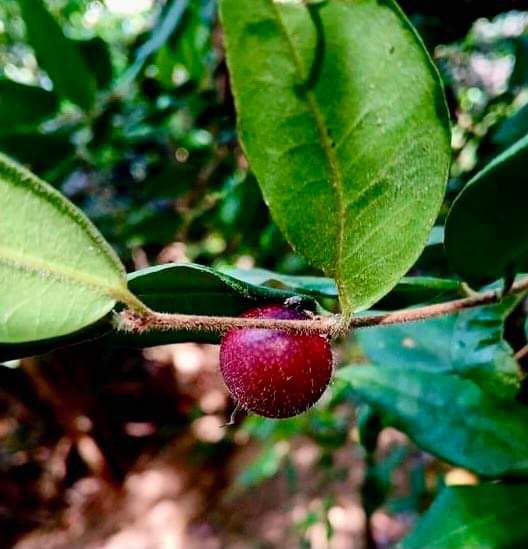
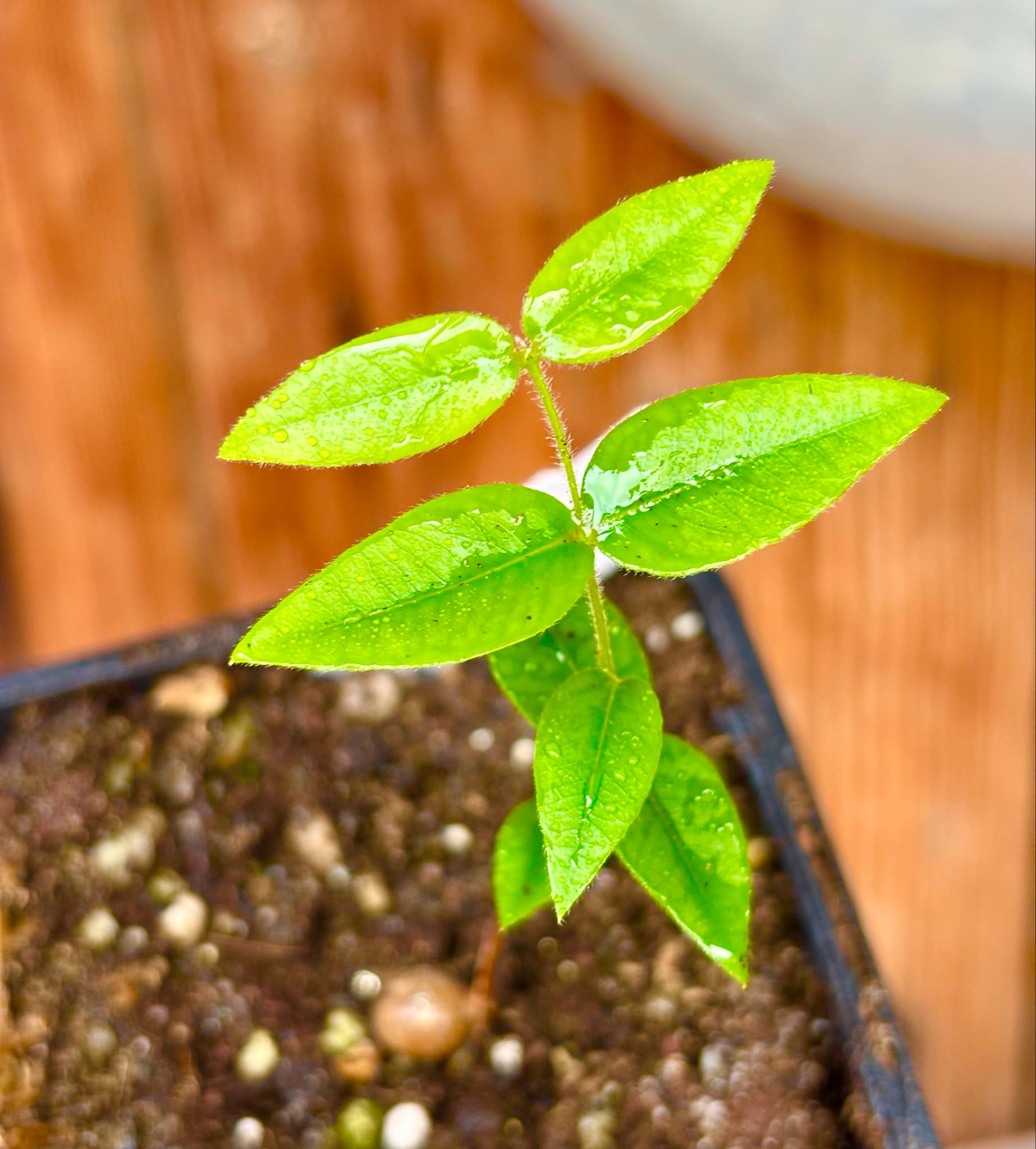
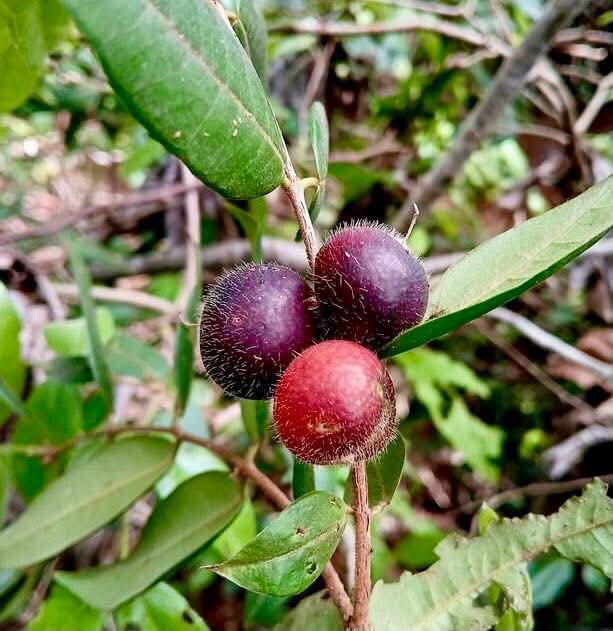
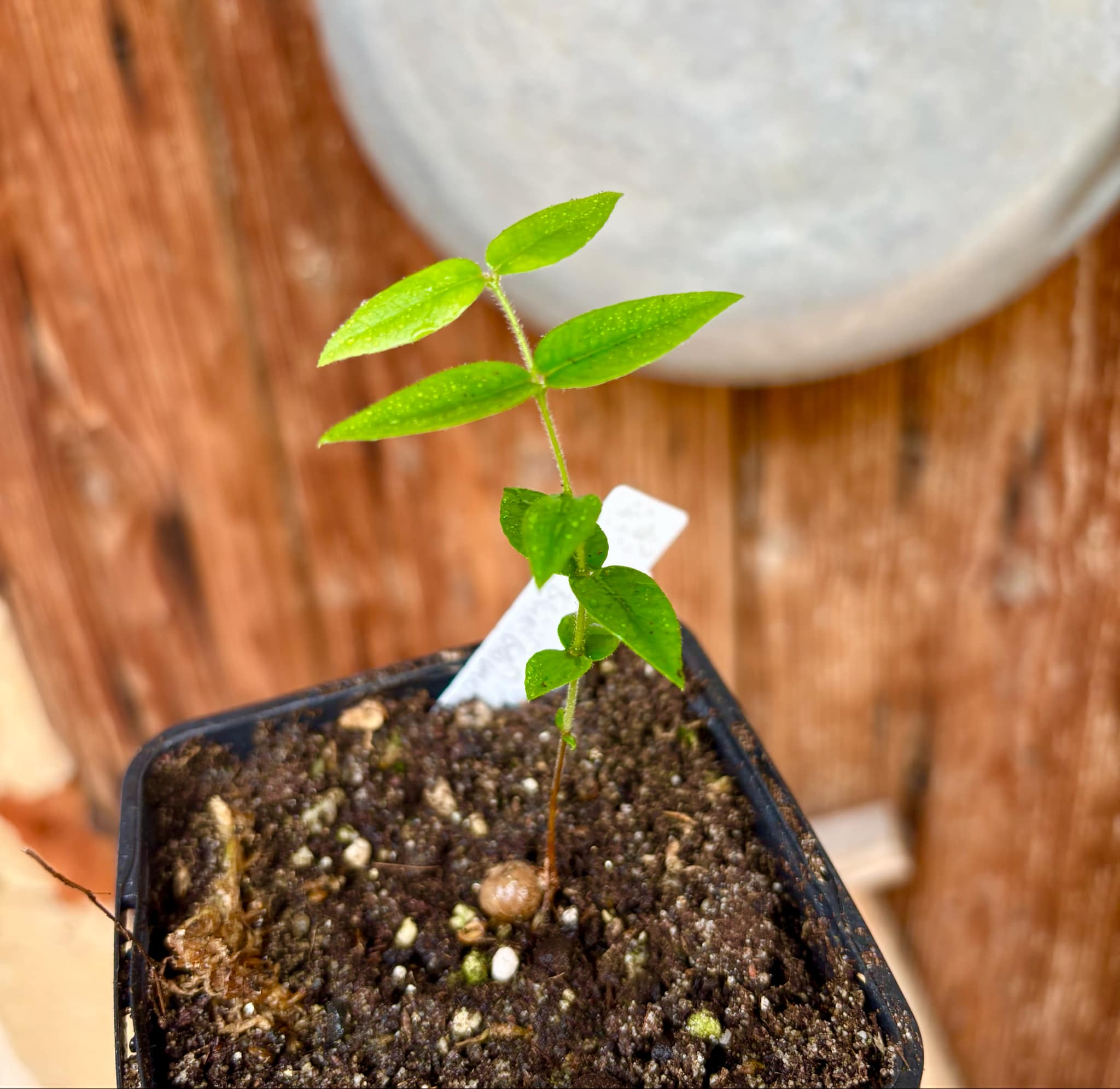
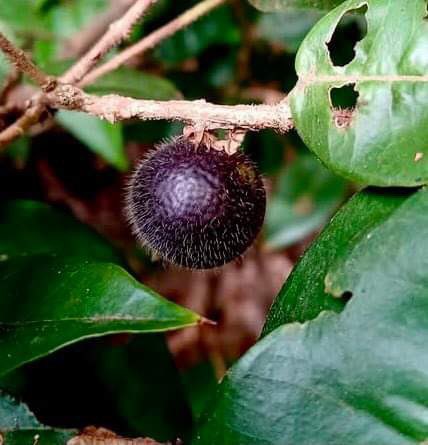
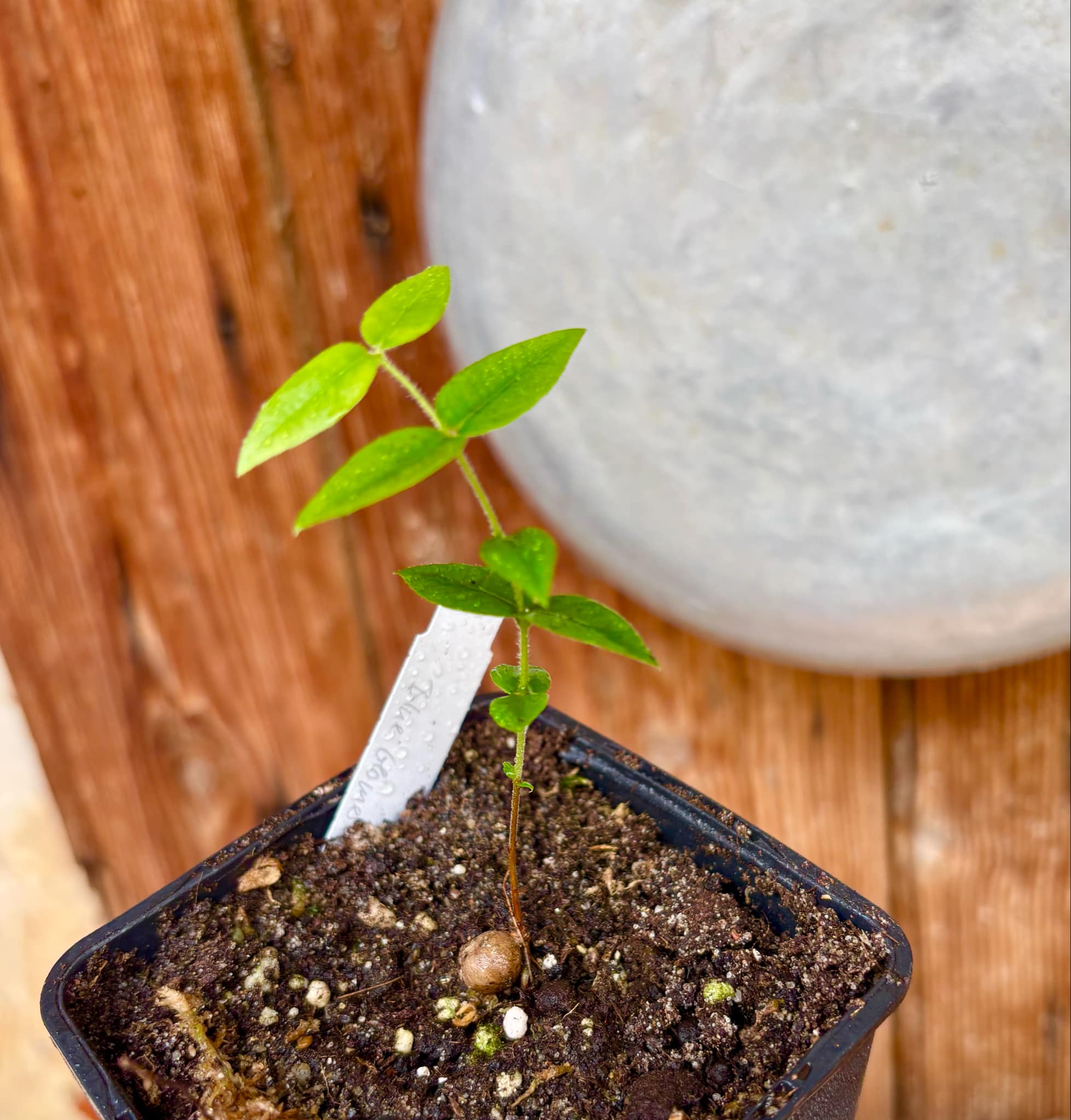

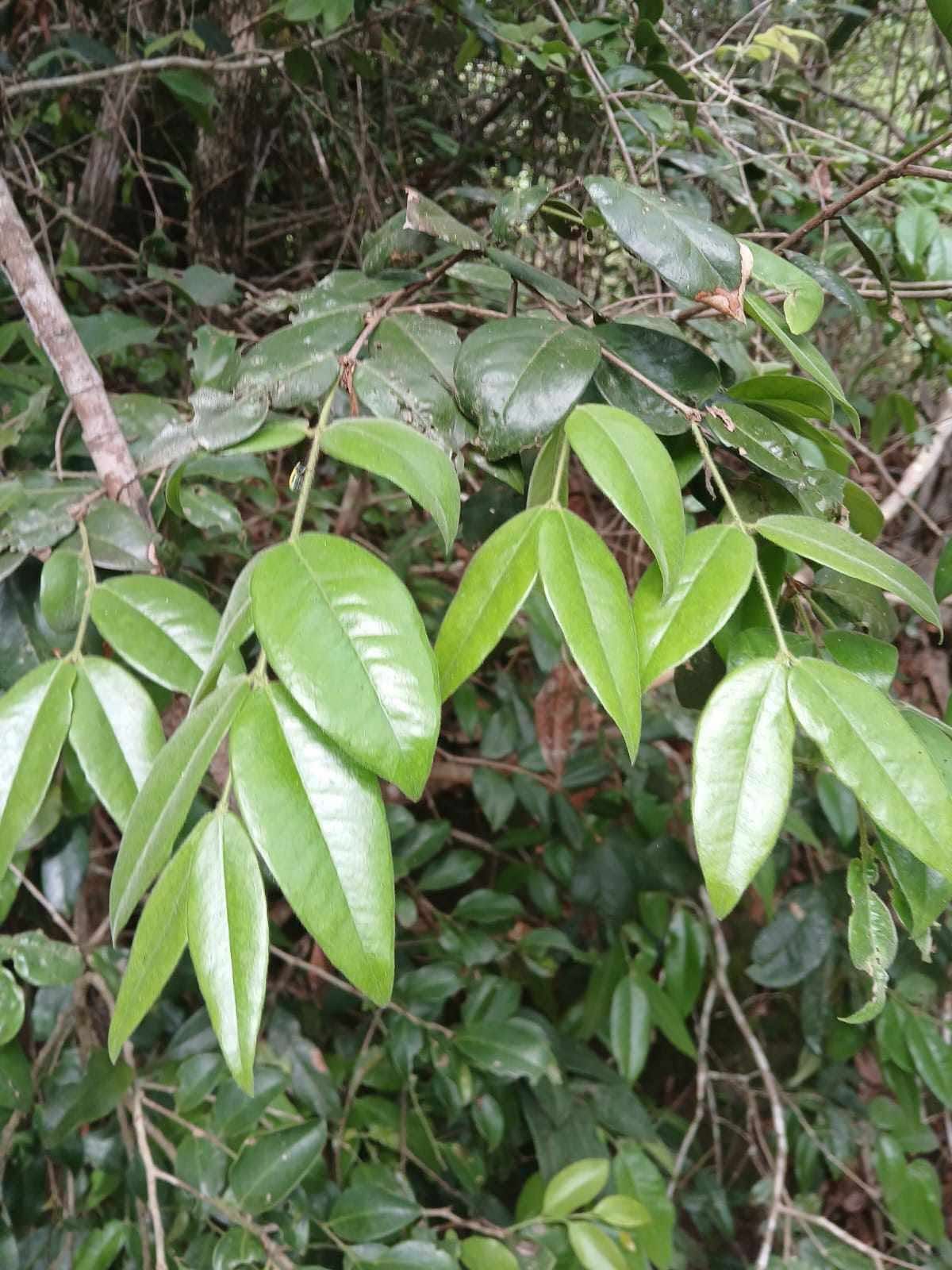
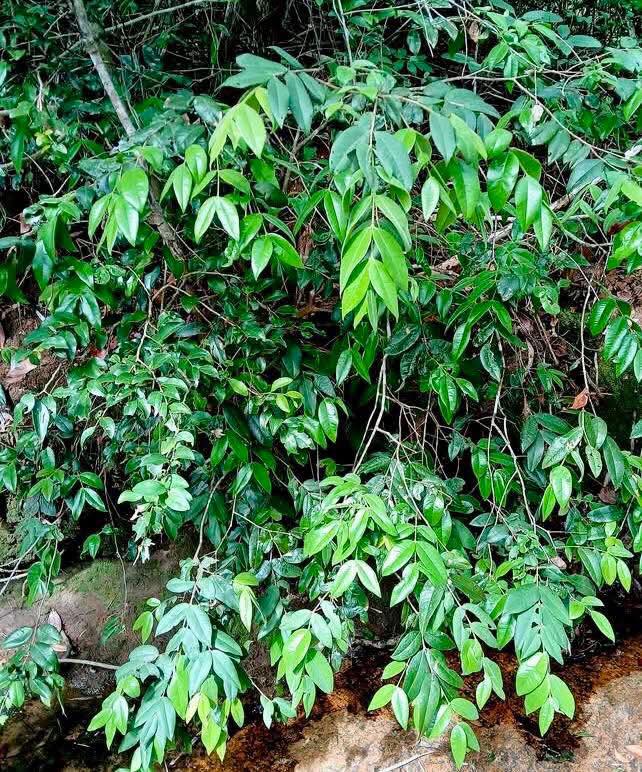



























Myrciaria sp Cabeludinha preta (Blue Glomerata)
Family / Familie: Myrtaceae
origin from / Herkunft: Brasil / Brasilien
Climate / Klima: temperate to warm (15-30C / 59-86F) / gemäßigt bis warm (15-30C / 59-86F)
Use / Verwendung: edible fruits, juice, jam, ice cream, etc. / essbare Früchte, Säfte, Marmelade, Eis usw.
you buy / sie kaufen: 1 small pottet seedling / 1 kleiner, getopfter Sämling
Delivery EU only
This Myrciaria does not yet have a scientific name and was found near the Myrciaria caerulescens.
The leaves are similar to the leaves of the Blue Guaquiea but the fruits are completely different.
The fruits have a sour-sweet taste.
The tree stays small and can survive long dry periods.
It grows slowly in the first two years.
The location in Bahia is warm and there is a long dry period every year.
The soil is iron-rich and has a lot of quartz sand in its composition.
Please overwinter this Myrciaria at a minimum of 15 degrees.
Diese Myrciaria hat noch keinen wissenschaftlichen Namen und wurde in der Nähe der Myrciaria caerulescens gefunden.
Die Blätter ähneln den Blättern der Blue Guaquiea aber die Früchte sind völlig unterschiedlich.
Die saftigen Früchte haben einen angenehmen sauer-süßen Geschmack.
Der Baum bleibt klein und kann längere Trockenzeiten überstehen.
Er wächst in den ersten zwei Jahren langsam.
Am Standort in Bahia ist es warm und es gibt jährlich eine längere Trockenzeit.
Die Erde ist eisenhaltig und hat viel Quarzsand in der Zusammensetzung.
Diese Myrciaria bitte bei mindestens 15 Grad überwintern.
